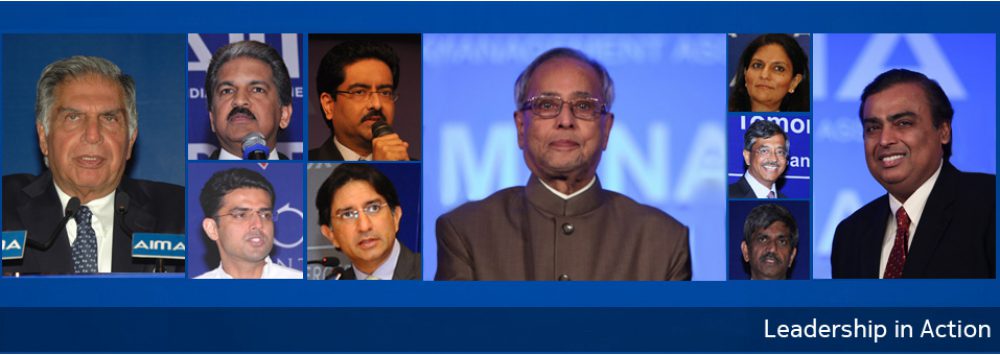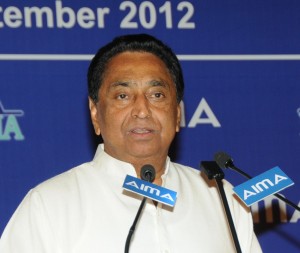In India we have developed a psyche to believe that what is not boom is gloom. I have seen the growth of auto sector at 34% and this is the moment of rejoice and celebration as we are growing and all auto manufacturers in other countries envy us for growing at such a pace, but still there is a feeling of gloom.
We should look at the future with the perspective of national growth in comparison to other countries. “Reforms” has become a buzz word and we do need reforms as they will become the strength in future. I must share with you that after the events that happened in 2008-2009 in UK & USA, we were concerned which model will be most suitable for India with the best reforms for the growth of our country. The bankers from the western world teach and preach us for the reforms that we need to do in financial sectors for many years but we have to understand that our priorities and needs are different and we have to act in a different way to achieve our goals. Reforms in process and governance are most important as they affect growth the most. We have to put our heads together and work together to provide these reforms for our country.
Another thing that we need to think about is the polity of our country. Indian politics in last 10-20 years has become very fragmented. In a fragmented polity we have regional & state parties. In addition to this there is no national economic policy, national investment policy and foreign policy. So, politics has become localised in so many states. We have all these factors which drive our growth and they are not on our agenda at all. We have to find a solution to deal with this. How do we reorient these challenges for the future? Should all this be left to the state governments?
Let’s take an example of land acquisition. We will have a central law on land acquisition very soon and all the states have to follow it. Land acquisition has been very inequitable for all. Many years of my life, I myself have fought for land acquisition, not for the purpose of acquisition but for price. 20-30 years ago, land was acquired by government for big irrigation projects and public sector to build houses, hospitals and schools and you were paid 10% of the price. If you are paid 10% of the market price, you look at replacement. Government does not want to pay more as this would make the project non viable. This is the history of land acquisition.
Some states are ruled by my party, some states are ruled by other parties. Most of you don’t even know the parties of Sikkim and north east. So, when we have a fragmented polity in our country, how should we put it all together, how do we arrive at a consensus? Because if you have the land acquisition bill passed at the centre, implementation is done by the state. With these things in the background, the future is not dark or dismal. I firmly believe in India’s growth model which is driven by domestic demand with growing disposable income in rural India. Initially four wheelers were sold in urban India only, now the rural market is the main focus for the automobile industry because of disposable income in rural India. A 5 lac rupee income in Delhi or Mumbai won’t mean much, but the same in rural India would mean a source to have an SUV.
Growth comes with challenges. According to a study 8% growth means that 25 million people will move from having one meal to two meals per day and how would you deal with that? In FDI and retail there is uproar. We want to make sure the development of agriculture & horticulture sector in India. So the future has to look at all these challenges and we cannot plan for the future without taking these challenges on-board. I don’t want to say that the growth is re-igniting as growth has never stopped. We need to understand our strengths and reorient ourselves. We have always had good demographics with young age profile. We have an aspiring population and that becomes a challenge for the infrastructure, especially to urban infrastructure. In India growth has preceded infrastructure, so we have huge infrastructure deficit in all areas. When we look around us, our young population is urbanising, we have a huge challenge in area of urban infrastructure. In next 12 years, 17% of GDP will be generated in our urban sector which means 17% of new job opportunities will be generated in urban sector. As we move on we have to deal with these challenges.
Another issue is related to the depleting markets in Europe and Asia and United states. 70% of capital in Europe was exported, that’s the history for last 20 years of North America, South America and Asia. How we draw in more internal investments? An investment has to be attracted, it cannot be demanded and that is the challenge we have. How do we make our country the world’s favourite investment destination? We have got to look at East Asia; in 2001 the trade percentage with East Asian companies was 30% which now is 60%. These are new markets for us. Share of USA and Europe has declined to 19%. It is India in the new world, we are interdependent & interconnected.
It is India with new internal challenges. Small & medium enterprises provide bulk of our outputs and have more challenges. The new world is becoming more protective about its trade policies and procedures. USA was a big champion in free trade which is now becoming the most protected country. Europe is concerned with internal economic challenges. The good part is that in India we don’t have these huge problems. We don’t have the deficit which Europe has. We have to deal with our fiscal deficit and we are dealing with it and it will only come down and not go up. This will change our macroeconomic structure. In India we clearly need to review our priorities and it will take some bold thinking and sacrifices on part of the government, business and the citizens and I am confident it will happen. What’s at stake is not our survival but the growth and future of our ambitious and entrepreneurial country.
The above article is an excerpt from the speech delivered by Mr. Kamal Nath, Minister for Urban Development & Poverty Alleviation at AIMA’s 39th National Management Convention which was held in September 2012.





Reforms, human resource reforms and government reforms are equally important for the economic growth of the country.
Great!!!
Impressive words
All institutions not to compromise on the package of educators
Our lifetimes almost every single one of us will be engaged in the planning process in one way or another.
The Growth is in our view starting to peter out and could do with refocusing.
Not sticking with the most important areas for growth and relentlessly pushing for progress.
Democratic governance underpins equitable growth. As part of its efforts to distribute the benefits of rapid social and economic development to all.
Impressive words 🙂